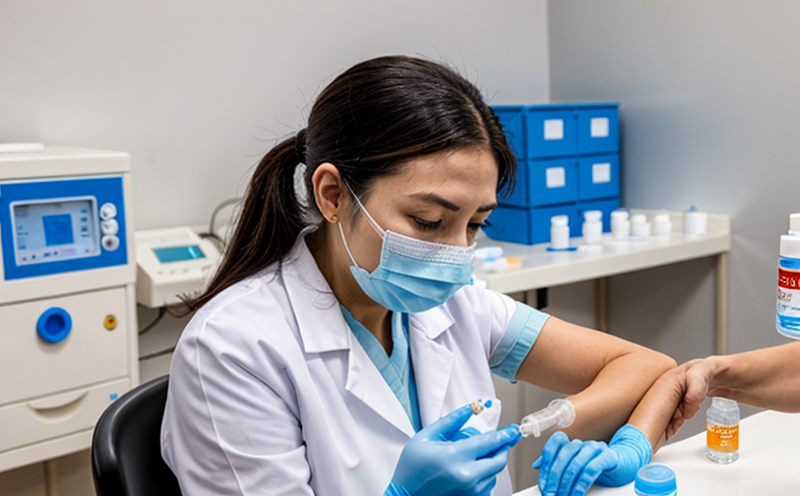EP Sterility Testing of Vaccines
The European Pharmacopoeia (Ph. Eur.) is a widely recognized and authoritative document that sets standards for the quality, safety, and efficacy of pharmaceutical products. Among its numerous tests, EP sterility testing ensures that vaccines are free from any viable microorganisms that could compromise their safety or effectiveness.
Sterility testing is one of the most critical steps in vaccine development and production. It involves rigorous microbiological methods to confirm the absence of pathogenic microorganisms such as bacteria, fungi, and viruses. The primary goal is to ensure that the vaccine does not contain any contaminants that could lead to adverse reactions or compromise its intended protective effect.
The testing process begins with the selection of appropriate media for growth and identification of potential contaminants. Commonly used media include thioglycollate broth, SPS agar, and chocolate agar plates. The samples are incubated under specific conditions tailored to the type of contaminant being sought. This step is crucial as it helps in identifying any microbial presence early in the process.
The next stage involves the use of various microbiological techniques, including direct examination, membrane filtration, and enrichment culture methods. These techniques allow for precise identification of microorganisms based on their characteristics and growth patterns. The results from these tests are meticulously recorded and analyzed to determine whether the vaccine meets the stringent requirements set by Ph. Eur.
Compliance with international standards such as ISO 11737-1:2019 is essential in ensuring that the sterility testing process adheres to best practices and guarantees consistent quality across different batches of vaccines. The use of advanced instrumentation like automated microbial identification systems enhances accuracy and efficiency.
Quality managers, compliance officers, R&D engineers, and procurement teams must prioritize EP sterility testing as it not only ensures product safety but also builds consumer trust in the efficacy and reliability of pharmaceutical products.
Why It Matters
The importance of EP sterility testing cannot be overstated. In the context of vaccines, any contamination can have severe consequences. For instance, bacterial endotoxins or fungal toxins could trigger dangerous immune responses in recipients. Viral contaminants might even lead to life-threatening infections.
Moreover, non-compliance with Ph. Eur. standards can result in legal penalties and reputational damage for pharmaceutical companies. Regulatory bodies like the European Medicines Agency (EMA) closely monitor vaccine production processes and enforce strict compliance measures. Failure to meet these requirements could lead to product recalls or even withdrawal from the market.
From a broader societal perspective, ensuring vaccine sterility is vital in maintaining public health and trust in immunization programs. Safe vaccines are essential for preventing widespread outbreaks of diseases such as measles, polio, and influenza. Any lapses in quality can undermine these efforts and jeopardize global vaccination campaigns.
Benefits
- Guarantees the safety of vaccine recipients by eliminating microbial contaminants.
- Ensures compliance with international standards such as Ph. Eur. and ISO 11737-1:2019.
- Supports R&D efforts to optimize vaccine formulations and production processes.
- Reduces the risk of adverse reactions and ensures consistent efficacy across different batches.
- Promotes trust in pharmaceutical products among healthcare providers and consumers.
Use Cases and Application Examples
| Vaccine Type | Description |
|---|---|
| Influenza Vaccine | Antigenic composition varies annually. Sterility testing ensures no contamination that could affect its effectiveness. |
| Polio Vaccine | Oral and injectable forms require strict sterility checks to prevent transmission of poliovirus. |
| Vaccine Type | Description |
| Tuberculosis Vaccine | Ensuring sterility is critical for preventing the spread of tuberculosis bacteria in immunocompromised individuals. |





